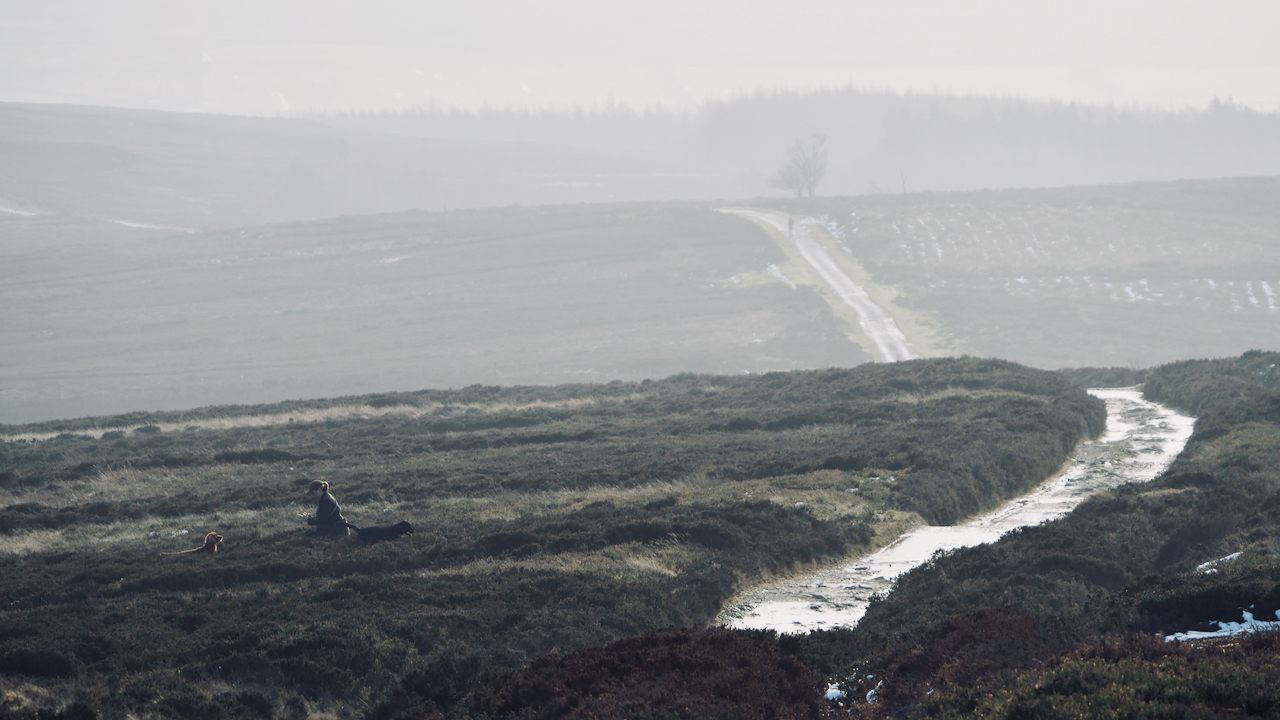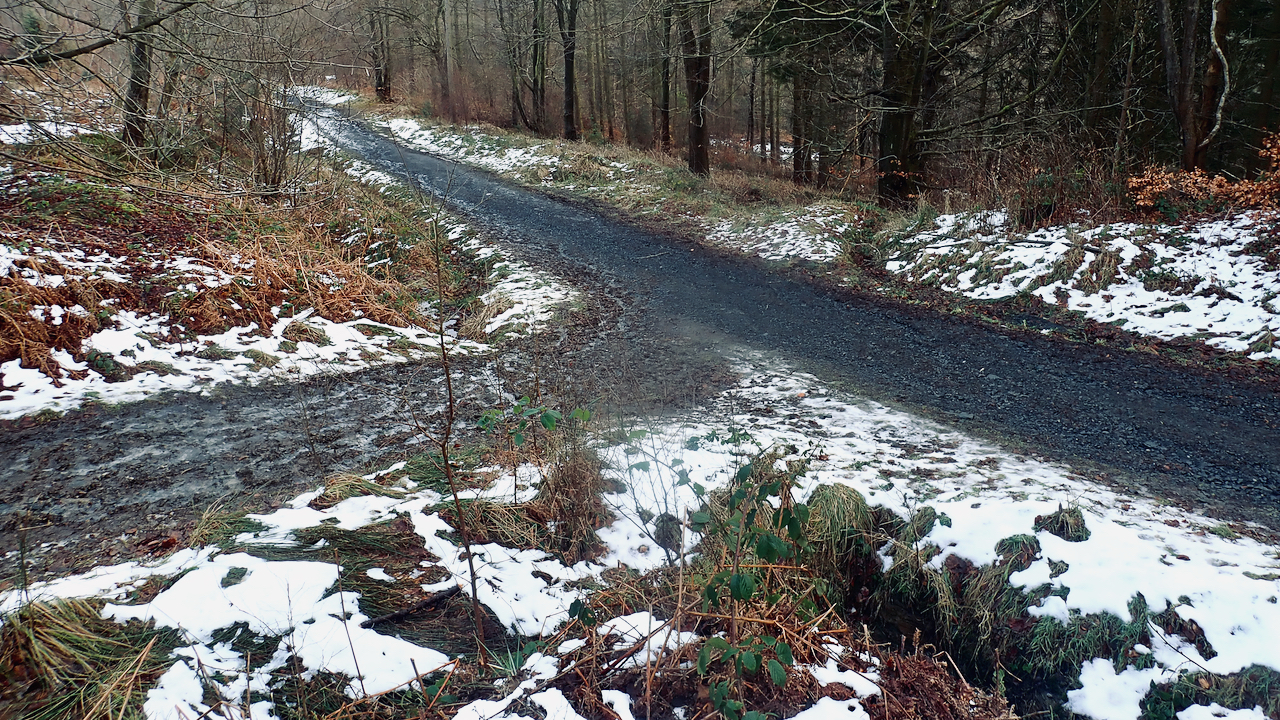Dull, overcast, and menacing rain. The blue skies over a snow blanketed moors seem an age ago.
‘Haswell’s Hut (Site of)’ is a feature named on the 1856 Ordnance Survey map that has intrigued me for some time. It is shown as just south of the Spot Height of 714 feet and east of the Ernaldsti, the ancient name for the ancient route from Guisborough to Westerdale. Attempts to find some remains have all ended in failure.
The trouble is the 1856 version of the map has not been geo-referenced with the modern version so it’s all a bit of a guess. The Lidar doesn’t reveal anything. But I always end up in the vicinity of a track junction.
So the other day I was looking through Grace Dixon’s book on Pinchinthorpe and Hutton Lowcross [Ref017] and I came across this quote:
“George Aswell has encroached on the Common, and recommended that notice be given to lay the same open and pull down the hovel”
I must have seen it before but I hadn’t twigged the missing’H’. The quote is the recommendation of the Hutton Manor Court sitting in 1843. She goes on to say George Aswell was ‘a wild rough character, who had enclosed and cultivated some land bordering the Kildale Road, and lived there with his daughter in a mud hut which was in “a fearful state.”
The Kildale Road is, of course, the Ernaldsti. The Hutton Manor Court was comprised of the tenants of Hutton, which was at that time a Crown Estate, numbering about six. It had recommenced in the mid-19th-century after a lapse of several years to deal with small local matters. But in 1843, the Steward actually commented that unless the old custom was revived of giving some “slight entertainment” to those participating and also an occasional dinner there would not be sufficient numbers to constitute a jury.
But the Court did sit in that year and ordered that the Constable of the village was charged to see that it’s recommendations were carried out in respect of George Aswell, namely “to lay the same open and pull down the hovel“.
But this new information did not help me at all. I still ended up at the same track junction and again gave up after several minutes scrabbling amongst the undergrowth. The Forestry Commission must have completed the Constable’s job of clearing the hovel. There was after all a sufficient enough features for those surveyors to pick up when the area was surveyed ten years later in 1853.
And that would have been the end of this post until I came across a report of the North Riding Sessions in the Yorkshire Gazette dated 1 July 1843 (§) :
JOSEPH TOASE, (26) was charged with having, on the 25th May, stolen a quantity of harness, the property of George Haswell, of Hutton Lowcross. Mr. STAPLETON counsel for the prosecution, said Haswell was a labouring man. On the 25th of May last, he went to his employment in the morning leaving his house as he supposed secured with a chain. When he returned in the evening he found that his house had been entered. He gave information to the police, and search was made in the stable occupied by the prisoner and the stolen articles were then discovered. They were produced in court, and having been identified by the prosecutor ,the jury found the prisoner GUILTY. He was sentenced to twelve months’ imprisonment at hard labour.
I have no date for the sitting on the Hutton Manor Court, as far as I know they are not available online, but, assuming it’s the same George Aswell/Haswell of course, the sequencing of these two events could conjure up quite different histories. If Haswell was robbed first and reported it to the police, this may have in fact brought him to the attention of the Hutton Manor Court.
On the other hand, if the eviction came first, Haswell must have found alternative accommodation in the village quite quickly. Maybe one of the jurors took sympathy with him.
Google pops up with another link to a George Haswell in Guisborough in the same time period. Again, I can’t help thinking this the same person but it’s from a family history website so I haven’t confirmed any of it.
Apparently, there was a George Haswell baptised in Guisborough on 29 February 1780 which would make him 63 in 1843. He married a Jane Armstrong in 1803 and they had two girls, both born in Guisborough, Elizabeth, 1804 and Sarah, 1806. None appear in the 1841 census but by 1851, both Jane and Elizabeth are recorded as being in the Northgate Union Workhouse. Jane is described as a pauper, classified as ‘dumb’, and was born in Scotland. She gives her age as 82. Her daughter, Elizabeth is described as a furrier.
If this is indeed our George Haswell, there are more questions. Which daughter was he living with in the mud hut off the Kildale Road in 1843, Elizabeth or Sarah? And where was the family in 1841? And what happened next?
Another long post, but it’s certainly keeping me occupied during these lockdown times.

§ “North-riding Sessions.” Yorkshire Gazette, 1 July 1843, p. 3. British Library Newspapers, link-gale-com.ezproxy.is.ed.ac.uk/apps/doc/JE3230851641/GDCS?u=ed_itw&sid=GDCS&xid=b41480c2. Accessed 27 Jan. 2021.

Leave a Reply to Fhithich Cancel reply